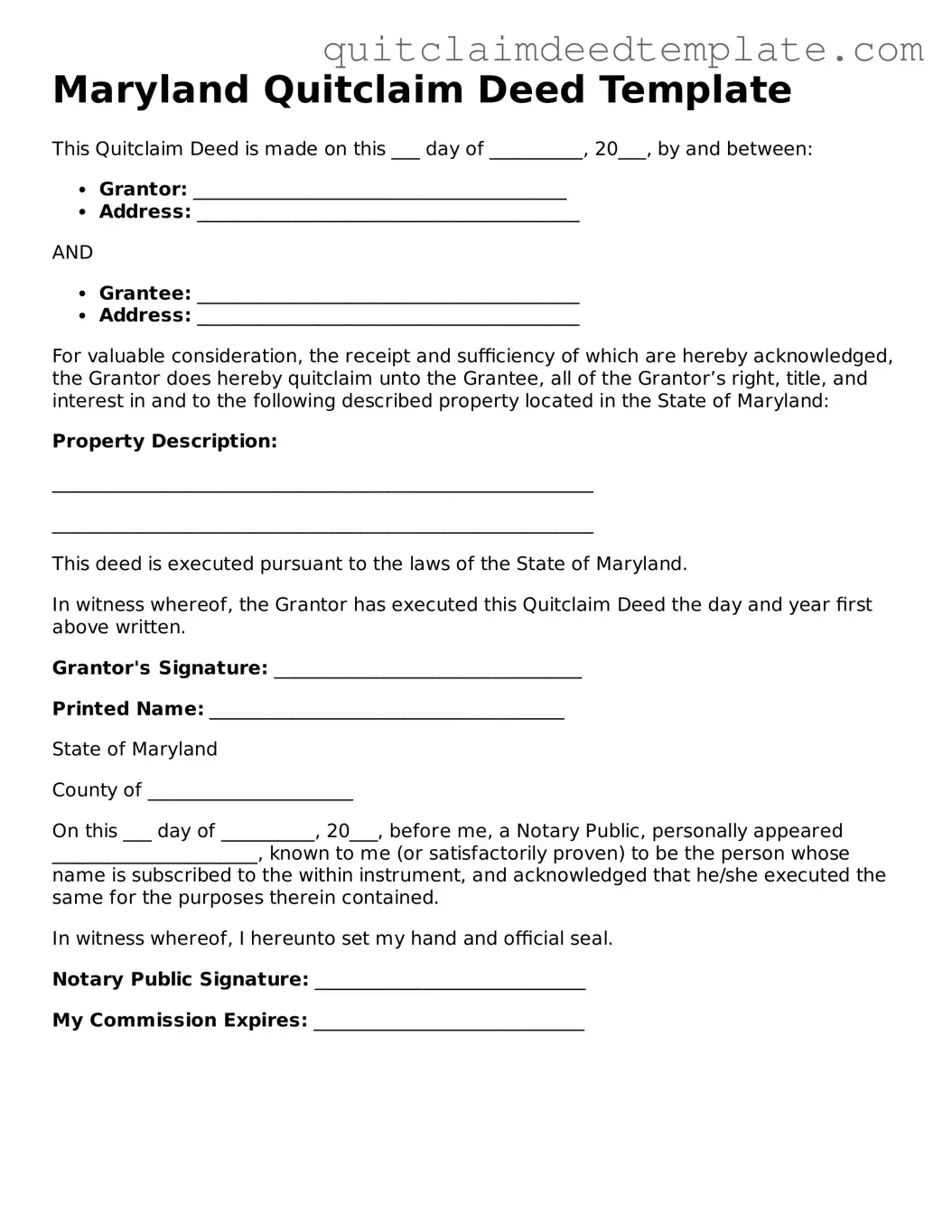Documents used along the form
When dealing with property transfers in Maryland, the Quitclaim Deed is an important document. However, it often works alongside other forms and documents that help ensure a smooth transaction. Here are five commonly used documents that you might encounter.
- Property Transfer Tax Form: This form is required to report the transfer of property and calculate any applicable taxes. It helps the state keep track of property transactions and ensures that taxes are paid appropriately.
- Affidavit of Consideration: This document provides details about the sale price or value of the property being transferred. It is often used to clarify the terms of the transaction and can help prevent disputes over the property's value.
- Title Search Report: A title search report is conducted to confirm the legal ownership of the property and identify any liens or encumbrances. This document is essential for ensuring that the seller has the right to transfer the property.
- Power of Attorney: If the property owner cannot be present to sign the Quitclaim Deed, a Power of Attorney allows another person to act on their behalf. This legal document grants authority to the designated individual to handle the transaction.
- Settlement Statement: This document outlines the financial aspects of the property transaction, including closing costs, fees, and any adjustments. It provides a clear breakdown of all costs involved, ensuring transparency for both parties.
Understanding these documents can help facilitate a property transfer and protect the interests of all parties involved. Each plays a unique role in the process, contributing to a smoother transaction and providing clarity throughout the process.
